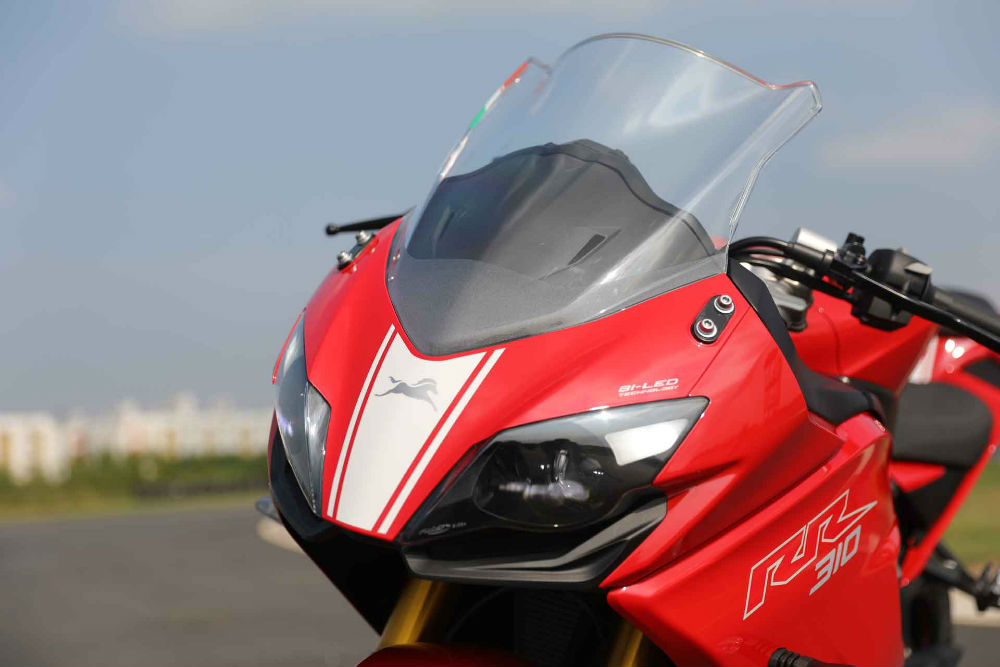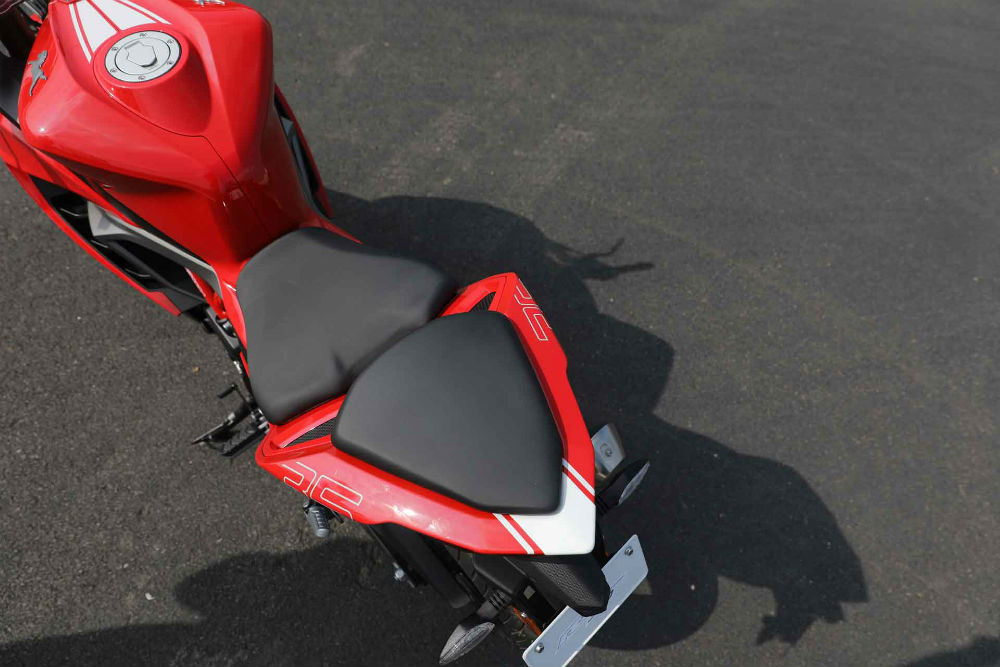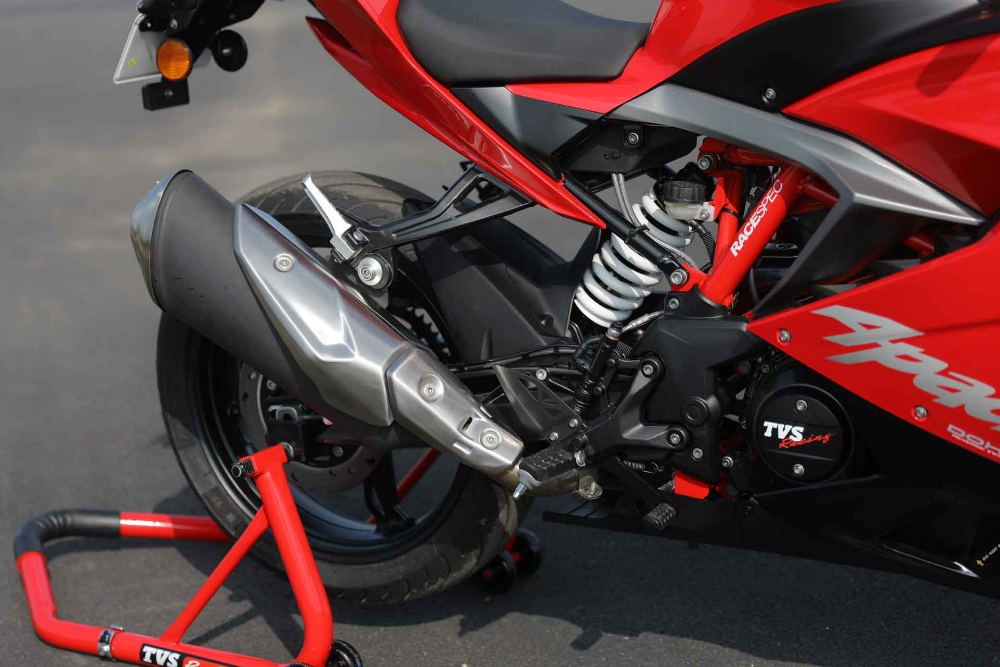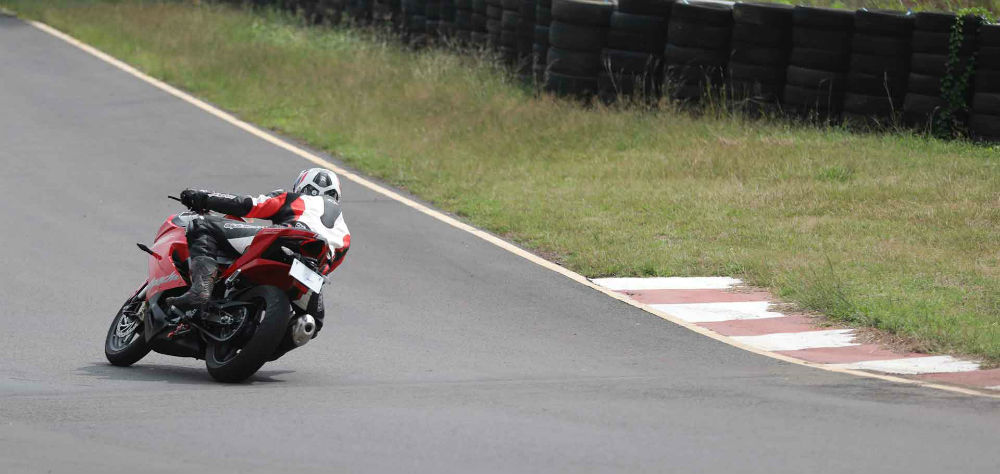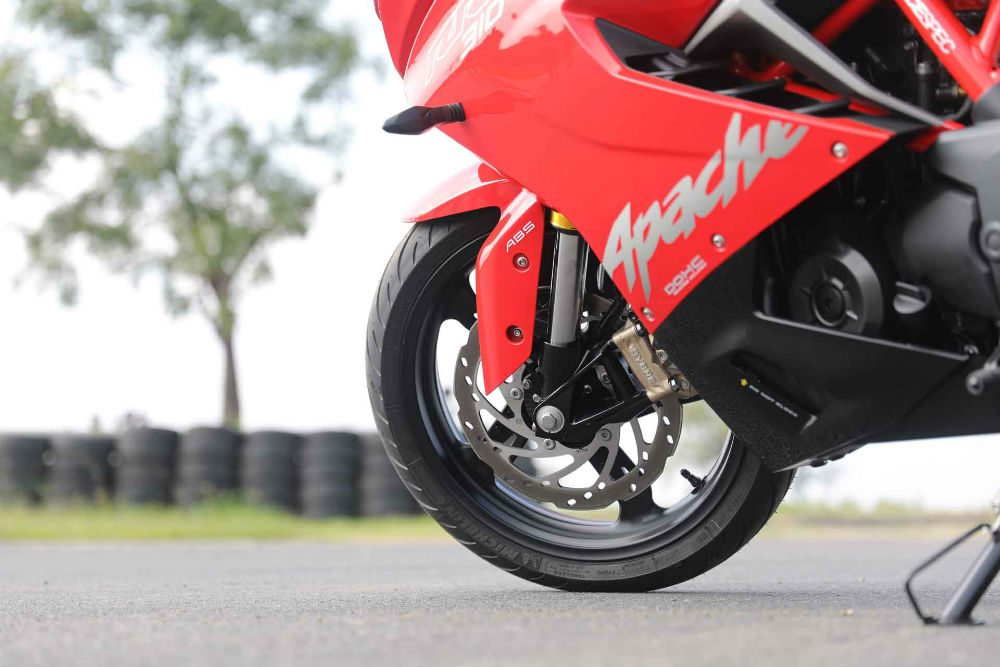There is a primal urge that lies within every true motorcyclist that makes them want to experience the essence of speed; and then some. But, as with human nature, it is an urge that needs to be slowly nurtured and allowed to grow. Simply so that the aforementioned motorcyclist can experience this sensation of speed in a safe manner and not have to sacrifice a limb or two. Thankfully, TVS has got thirty-five years of racing experience to ensure that the sporty DNA of its race machines are passed on to its production motorcycles. Could this be the next entry-level, true-blue sports-bike that sets that path in motion?
Enter the all new TVS Apache RR 310; a supersport first showcased at the Auto Expo in 2016 as the Akula 310. This is a motorcycle that has benefitted from the tie-up between TVS and BMW. And while spy images of the motorcycle have been doing the rounds for a while now, those images do absolutely no justice to actually seeing the Apache RR 310 in the flesh. It’s simply stunning to look at. It’s got the edges, points and curves that set it starkly apart from anything that’s been produced in the Indian market so far. Drawing design inspiration from the contours of a shark, and its pre-production name (Akula is Russian for shark), the Apache RR 310 certainly does look the predator part.
With its dual headlights and air-intakes placed directly under them, one cannot help but draw some comparison to the Ducati Panigales. And that white stripe that runs along the center does bear a strong resemblance to the Superleggera paint-scheme. The tank looks well chiselled and solid, narrowing towards the tank-seat junction — that aids when leaning off the motorcycle. And the exposed trellis frame that’s painted red really adds appeal to the aesthetics of the motorcycle. Although, it’s the up-swept tail end really steals the show. With the tail-lights assuming a sort of horned outline, the jutting contour under the tail-light assembly adds a sort of completion to the whole shark theme. The abundance of wires and cables that lie exposed near the handle-bar and under-seat area do take away from the general beauty of the motorcycle. And let’s not forget that humungous silencer; but we can blame some of that on the BS4 restriction norms.
Get into the saddle and the vertically stacked instrument cluster looks not only racy, but exquisitely thought out and unique; the vertically cascading tachometer is certainly a nice touch. The three-piece forged handle-bars are comfortably wide and there isn’t much of a stretch to them. And at 810mm, the seat-height is reasonable and would only be too tall for the shortest of riders. Overall ergonomics of the bike should do fine with touring duties, city riding or a bit of spirited fun. It’s not as aggressive as something like the KTM RC390, while it also feels more spacious than the TVS Apache RTR 200.
The Apache RR 310 shares its power-plant with BMW’s G310R; a reverse-inclined, fuel-injected, 312cc single-cylinder motor that churns out a respectable 34PS of power at 9,700rpm and 2.78kgm of torque at 7,700rpm. The interesting part is that with the air-intakes positioned at the front, there’s a down-draft port in the cylinder head that optimizes air-volume in the combustion chamber with some assistance from gravity. The exhaust gases are then sent out of the bend-pipe that’s positioned to the rear of the engine — essentially what a reverse-inclined engine does. Although the crankshaft gets shell-bearing technology and a balancer shaft, there is a minor vibration from the engine at higher revs. At idle, the engine sounds like any single-cylinder should, there isn’t really anything special about the acoustics; it’s at higher revs that the engine churns out a more purposeful note.
But it’s the tractability of this motor out on the race-track that really gets you buzzing. The manner and quantum of power-delivery is a very linear one; which is great for the track. You’ve got enough juice to power out of corners even if you happen to be in a higher gear. Although, personally, I would have preferred a slightly punchier top-end.
The beauty of this motorcycle lies in how forgiving it is to ride on the track. The chassis, engine, tyres and brakes work in harmony to really allow you to search for its limit. And once you find that limit, all these elements make it quite easy to not allow things to go awry. Cornering stability is commendable; the inverted front forks and mono-shock at the rear offer great levels of feedback for a street-bike and allow you to always hold your intended line. Pliancy is something that will have to be discovered out on street-conditions.
Braking power is excellent out on the track; although the initial bite is decent, the progression in the lever really rakes in the speed. While I was initially braking from the 100m marker for corner entry, I soon discovered that the bike was stopping too soon and had to eventually brake closer to the 50m marker for a proper corner entry speed. But as the laps went on, it must be said that the brake’s stopping force does tend to fade a bit after prolonged hard usage. Grip from the Michelin Pilot Street tyres remained constant, consistent and sufficient.
Overall, the wait for the Apache RR 310 has been well worth it. From design to engineering, this is a well-thought out, wholesome machine that TVS has clearly put a lot of effort into. For Rs. 2.05 lakh, ex-showroom, TVS doesn’t seem to have cut any corners. Inputs from current motorcycle racers and TVS’s decades of racing experience, are present in subtle and unsubtle manners all over this motorcycle. Although we’ve only ridden it on the track for now, the Apache RR 310 shows a whole lot promise for being a versatile street motorcycle too. You can be sure we’ll all be jumping for the keys once the bike reaches the Motoring World office for road testing.
You can have a look at more photos of the TVS Apache RR 310 in our gallery here.










